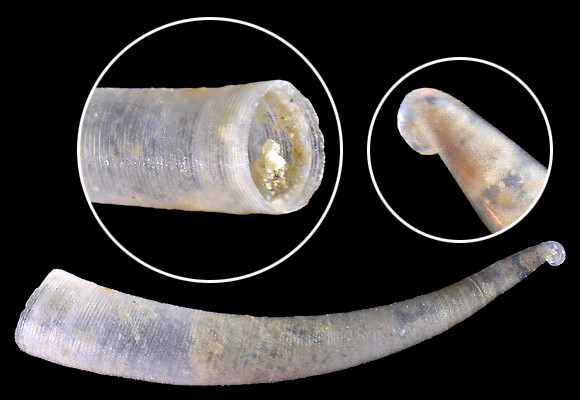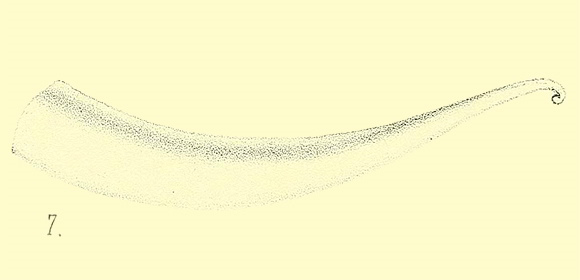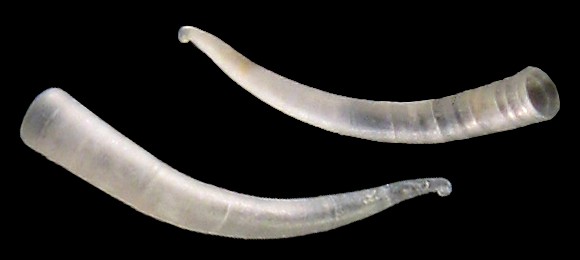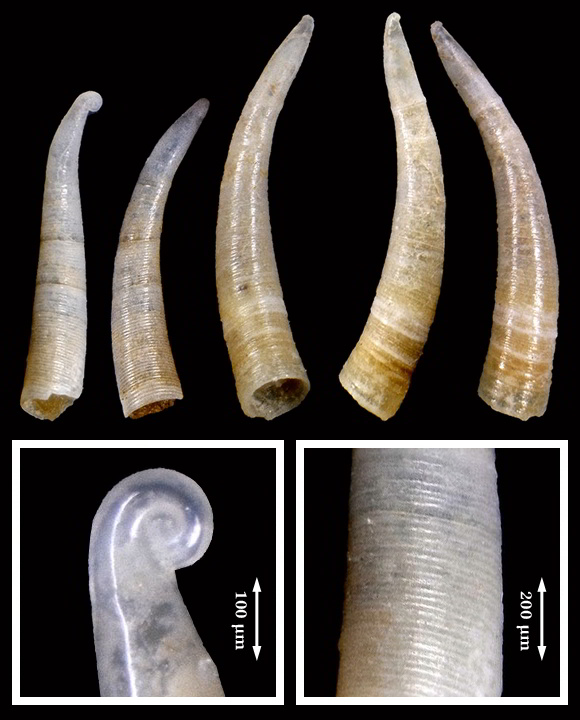de Folin in de Folin & Périer, 1870

Grazer and detritus feeder in the infralittoral.
22m deep, Capo Murro di Porco, Siracusa, SE.Sicily. 3mm.

« The test is noticeably conical and striated transversely, but the striations are less wavy than on the Hong Kong species. The aperture is simple, without rim, circular and not oblique. There is no semblance of septum. The spiral core is joined to the tube by a weak blade. The general curve of the test is flexuous. » – L. de Folin: “Nouvelles études sur le golfe de Gascogne”, in de Folin & Périer, Les fonds de la mer vol. I, Paris 1867-1871, p.218.
Above, the species in de Folin & Périer, Plate XXIX.
The members of the genus Parastrophia are sometimes placed in the family CTILOCERATIDAE (Hinoide & Habe, 1978), in which a distinctive feature is the presence of the whole apex in adult shells.

Original pictures provided by M.T. Spanu (IT).
– (CC BY-NC-SA) –

– (CC BY-NC-SA) –